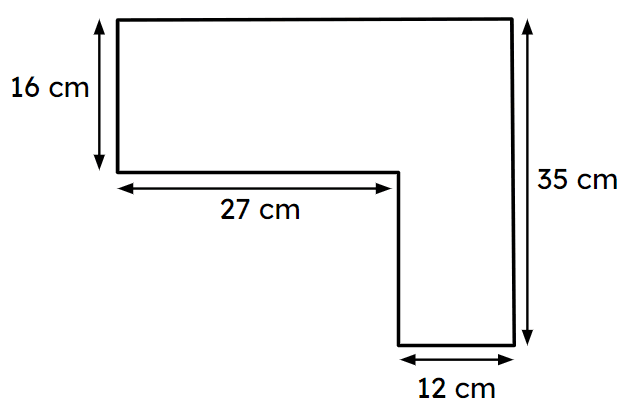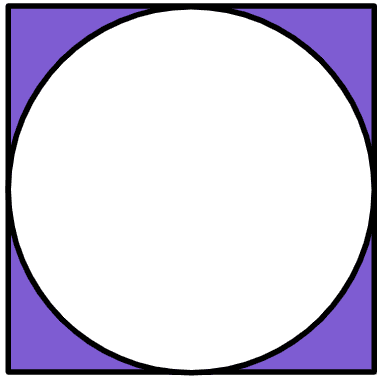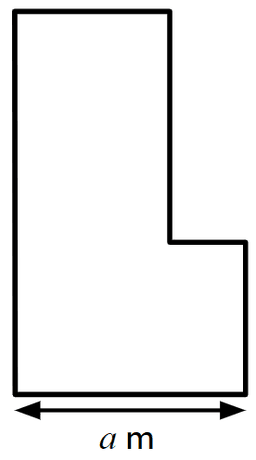Myths about teaching can hold you back


- Year 10•
- Foundation
Problem solving with 2D shapes
I can use my understanding of 2D shapes to solve problems.


- Year 10•
- Foundation
Problem solving with 2D shapes
I can use my understanding of 2D shapes to solve problems.
These resources were made for remote use during the pandemic, not classroom teaching.
Switch to our new teaching resources now - designed by teachers and leading subject experts, and tested in classrooms.
Lesson details
Key learning points
- When problem solving, consider whether any elements are familiar from other areas of maths.
- Keep the goal in mind, it is easy to get distracted by too much information.
- With diagrams, it can be beneficial to add information to them (such as extra lines).
Keywords
Area - The area is the size of the surface and states the number of unit squares needed to completely cover that surface.
Compound shape - A compound shape is a shape created using two or more basic shapes.
Composite shape - A composite shape is an alternative for a compound shape.
Common misconception
When finding the perimeter of a rectilinear compound shape, pupils might sum the perimeters of each rectangle.
Part of the perimeter for each rectangle is inside the compound shape. Therefore, not all of the perimeter of each rectangle contributes towards the perimeter of the compound shape in this problem.
To help you plan your year 10 maths lesson on: Problem solving with 2D shapes, download all teaching resources for free and adapt to suit your pupils' needs...
To help you plan your year 10 maths lesson on: Problem solving with 2D shapes, download all teaching resources for free and adapt to suit your pupils' needs.
The starter quiz will activate and check your pupils' prior knowledge, with versions available both with and without answers in PDF format.
We use learning cycles to break down learning into key concepts or ideas linked to the learning outcome. Each learning cycle features explanations with checks for understanding and practice tasks with feedback. All of this is found in our slide decks, ready for you to download and edit. The practice tasks are also available as printable worksheets and some lessons have additional materials with extra material you might need for teaching the lesson.
The assessment exit quiz will test your pupils' understanding of the key learning points.
Our video is a tool for planning, showing how other teachers might teach the lesson, offering helpful tips, modelled explanations and inspiration for your own delivery in the classroom. Plus, you can set it as homework or revision for pupils and keep their learning on track by sharing an online pupil version of this lesson.
Explore more key stage 4 maths lessons from the 2D and 3D shape: compound shapes unit, dive into the full secondary maths curriculum, or learn more about lesson planning.

Licence
Prior knowledge starter quiz
6 Questions
Q1.A carpet costs £30 per m². 8.5 m² of carpet costs £ .
Q2.A shape is a shape created using two or more basic shapes.
Q3.A rectangle has a base of 8 cm and an area of 40 cm². The height of the rectangle is cm.
Q4.A circle has a diameter of 9 cm. What is its area (to 1 decimal place)?
Q5.Which calculations would find the perimeter of the compound rectilinear shape?

Q6.The area of the compound rectilinear shape is cm².

Assessment exit quiz
6 Questions
Q1.The length of the square is 20 cm. Calculate the area of the shaded region, give your answer correct to 1 decimal place.

Q2.The radius of the circle is 20 cm. Which calculation can be used to find the area of the shaded region?

Q3.The compound rectilinear shape is constructed by joining two congruent rectangles. The total area is 90 m². The area of each congruent rectangle is m².

Q4.The perimeter of the square is 40 cm. The area of the shaded region is cm² (to 1 decimal place).

Q5.The compound rectilinear shape is constructed by joining two congruent rectangles. The total area is 120 cm² and $$a$$ = 10. Calculate the length of the longest side.

Q6.The compound rectilinear shape is constructed by joining two congruent rectangles. The total area is 80 cm² and $$a$$ = 8. The perimeter of the shape is cm.


